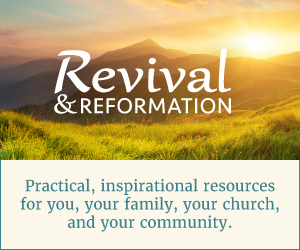IN MEETINGS with church elders and in private conversations with them in regard to their work in the church, I note that one of the requests most frequently made is, "Can you give us some help in the preparation of sermons?" At a recent meeting with the elders of the churches of one of our conferences I asked for a show of hands by all who were expected to preach quite frequently on Sabbath mornings. A large percentage of the hands were raised.
During this year we hope to give special help in this area. Later in the year we will be running a series of special articles on the preparation of sermons by one of our successful instructors in homiletics. In the meantime we will try to answer a few of the most frequently asked questions with regard to sermon preparation. The first of these is, "Where can I go for materials or sermon ideas?"
The Best Source Material
The best source material is, of course, the Bible. So the best preparation for effective preaching is familiarity with the Word. One is more likely to be faithful in Bible study if he follows a definite plan. In this connection the book Profitable Bible Study, by Wilbur M. Smith, can be very helpful. It is published by W. A. Wilde Company, Natick, Massachusetts." In addition to discussing seven great things the study of the Bible will do for the individual, it suggests eight methods for its study. These methods can be very helpful as they relate to the development of sermons. The author discusses the study of the Bible a book at a time, by chapters, paragraphs, and verses. Searching questions are posed that will help the reader to grasp the scriptural lessons. He will learn how to discover the theme, how to outline and develop it, what practical lessons to look for, errors to avoid, duties to per form, promises to claim, and so on.
Words
The fifth approach suggested is through the study of specific words. The word believe is cited as an example. The skeleton out line of a sermon using this word as a basis might be:
I. The One in whom we are to believe
II. The reasons for believing in Christ
III. The consequences of believing in Him
IV. The tragic consequences of not believing
In the study of words one may note with interest the first time significant words appear. Also give study to the various titles of Christ. Each of them could be developed with the use of numerous examples and illustrations. Very helpful in this connection would be the volume Preaching From the Types and Metaphors of the Bible, by Benjamin Keach. (See book review, page 50.)
A sixth method listed in the study of the Bible is the biographical approach. Fifteen helpful suggestions or questions are submitted that will guide toward a logical development of the character study. This can be very helpful.
A study of the prayers of the Bible is next suggested. According to Dr. Smith, there are approximately eighty-three prayers in the Old Testament and forty-nine in the New Testament, of which twenty-eight are in the Gospels. Ten specific suggestions are made as to the approach one might use in studying these prayers. The excellent ideas offered here can be a great help to the one offering the pastoral prayer in the worship service. Consider, for instance, the five elements of prayer: Adoration, thanksgiving, confession, petition, and intercession.
Christ in All the Bible
The eighth method of Bible study is "Finding Christ in All the Scriptures." We are reminded that Christ in talking with the two disciples on the road to Emmaus began "at Moses and all the prophets, . . . expound[ing] unto them in all the scriptures the things concerning himself" (Luke 24:27). Christ is to be found in the sacrificial offerings, in the services of the tabernacle and Temple, and in the prophecies of His coming. Types of Christ are also to be found in the lives of Adam, Joseph, David, and others. Preaching From the Types and Metaphors of the Bible has outline studies of eighteen Old Testament characters as types of Christ, each of which could form the basis for a sermon.
Other suggestions for Bible study listed by Dr. Smith include the "fearnots" of the Bible; great conversions of the Bible; the "musts" of the Bible; the attributes of God; questions Jesus asked men; the invitations of Jesus; the emotions of Jesus; the great revivals of the Old and the New Testament; and many others.
The 166 pages of this volume are filled with practical examples of what the writer has in mind.
An added feature of the book is the writer's list of the 100 best books for the Bible student's library. Wilbur Smith is recognized as one of the greatest Christian bibliographers in the world, and his suggestions on books can be most helpful. Commenting on this list, Pastor H. M. S. Richards, Sr., said, "This has been invaluable to me, and I have built my library to a certain extent around his suggestions."
Every church elder as well as minister will find Profitable Bible Study an invaluable aid in his strivings toward effective Biblical, Christ-centered preaching. It is available through your local Adventist Book Center for $2.95.














